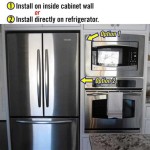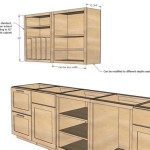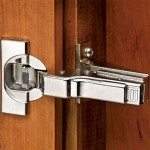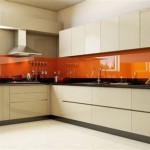Can You Paint Plastic Coated Kitchen Doors? A Comprehensive Guide
The prospect of revitalizing a kitchen without the expense of a full remodel often leads homeowners to explore DIY solutions, such as painting existing cabinets. A common query arises: can plastic-coated kitchen doors be successfully painted? The answer is generally yes, but the process requires careful preparation, the selection of appropriate materials, and meticulous application techniques to achieve a durable and aesthetically pleasing finish. This article provides a detailed guide to painting plastic-coated kitchen doors, outlining the necessary steps and considerations for a successful outcome.
Plastic-coated kitchen doors, typically featuring a thermofoil or melamine finish, present unique challenges compared to solid wood equivalents. These surfaces are non-porous, making it difficult for paint to adhere properly. Without proper preparation, the paint can easily chip, peel, or scratch, resulting in a less-than-desirable appearance and a short-lived finish.
Successful painting of plastic-coated doors relies heavily on surface preparation. This involves cleaning, sanding, and priming the doors to create a suitable surface for the paint to bond to. Choosing the right paint type and application method is equally crucial. Incorrect product selection can lead to adhesion issues and a compromised final result.
Key Point 1: Essential Preparation for Painting Plastic-Coated Doors
The foundation of any successful paint job lies in thorough preparation. In the case of plastic-coated kitchen doors, this step is even more critical due to the non-porous nature of the surface. The following steps outline the necessary preparation process:
1. Removal and Hardware Detachment: Begin by carefully removing the doors and drawers from the cabinet frames. Label each door and drawer to ensure proper reinstallation later. Remove handles, knobs, hinges, and any other hardware. Store these components safely to prevent loss or damage during the painting process. Consider replacing old or outdated hardware to further enhance the updated look of your kitchen.
2. Thorough Cleaning: Clean the doors and drawers thoroughly to remove grease, dirt, and grime. Use a strong degreaser specifically designed for kitchen surfaces. Apply the degreaser according to the manufacturer's instructions, paying particular attention to areas around handles and edges where grease tends to accumulate. Rinse the surfaces thoroughly with clean water and allow them to dry completely. Any remaining residue can compromise the adhesion of the primer and paint.
3. Surface Sanding: Sanding the plastic coating is essential for creating a mechanical key for the primer to grip. Use a fine-grit sandpaper (around 220-grit) to lightly scuff the entire surface of the doors and drawers. Avoid applying excessive pressure, as this can damage the coating. The goal is to create a slightly roughened surface, not to remove the plastic coating entirely. After sanding, wipe the surfaces clean with a tack cloth to remove any sanding dust. This step is crucial for preventing imperfections in the final paint finish.
4. Application of Adhesion Primer: Applying a high-quality adhesion primer is perhaps the most important step in painting plastic-coated doors. Choose a primer specifically formulated for use on slick, non-porous surfaces like plastic, laminate, or melamine. These primers contain bonding agents that promote adhesion and prevent peeling. Apply the primer in thin, even coats, following the manufacturer's instructions regarding drying time. A single coat of primer is usually sufficient, but a second coat may be necessary in areas that are particularly smooth or glossy. Allow the primer to dry completely before proceeding to the next step.
5. Light Sanding of Primer: Once the primer is completely dry, lightly sand it with a very fine-grit sandpaper (around 320-grit) to smooth out any imperfections and create an even surface for the paint. Wipe the surfaces clean with a tack cloth to remove any sanding dust.
Key Point 2: Selecting the Right Paint and Application Techniques
Choosing the appropriate paint and application method is critical for achieving a durable and aesthetically pleasing finish on plastic-coated kitchen doors. Different types of paint offer varying levels of adhesion, durability, and aesthetic appeal. The application technique also plays a significant role in the final outcome.
1. Paint Type Selection: Acrylic latex paints are generally recommended for painting plastic-coated kitchen doors. They offer good adhesion, durability, and ease of application. Choose a high-quality paint specifically formulated for use on cabinets or furniture. Avoid using oil-based paints, as they tend to yellow over time and may not adhere as well to plastic surfaces. Consider using a paint with a built-in primer for enhanced adhesion and coverage. Epoxy paints are another option, known for their exceptional durability and resistance to scratches and chemicals. However, they can be more challenging to apply and may require specialized equipment.
2. Paint Finish: The choice of paint finish is largely a matter of personal preference. Semi-gloss and satin finishes are popular choices for kitchen cabinets due to their durability and ease of cleaning. They also offer a subtle sheen that enhances the appearance of the doors. Matte finishes are less durable and may be more difficult to clean, but they can provide a more modern and understated look. High-gloss finishes are very durable and easy to clean, but they can also highlight imperfections in the surface. Consider the overall style of your kitchen and the amount of light it receives when choosing a paint finish.
3. Application Methods: There are several methods for applying paint to kitchen doors, each with its own advantages and disadvantages:
a. Brush and Roller: This is the most common and accessible method for DIYers. Use a high-quality brush with synthetic bristles for applying paint to edges and details. Use a foam roller for applying paint to larger, flat surfaces. Apply the paint in thin, even coats, overlapping each stroke slightly to avoid streaks. Allow each coat to dry completely before applying the next.
b. Spray Painting: Spray painting provides a smooth, even finish and is ideal for achieving a professional-looking result. This method requires a paint sprayer, such as an airless sprayer or an HVLP (high-volume, low-pressure) sprayer. Thin the paint according to the manufacturer's instructions to ensure proper atomization. Apply the paint in thin, even coats, overlapping each stroke slightly. Wear appropriate safety gear, including a respirator, eye protection, and gloves, when spray painting.
c. Using Pre-Valved Aerosol Cans: This is a user-friendly option, often favored for smaller projects or areas requiring precise application. It offers ease of use and a controlled spray pattern. Ensure proper ventilation and wear a respirator when using aerosol paints.
4. Number of Coats: Two to three coats of paint are typically required for achieving full coverage and a durable finish. Allow each coat to dry completely before applying the next. Lightly sand the surface between coats with a very fine-grit sandpaper to smooth out any imperfections.
Key Point 3: Post-Painting Care and Considerations
Once the paint has dried completely, it is important to handle the doors and drawers with care to avoid scratching or damaging the finish. Allow the paint to cure for several days before reinstalling the hardware and reattaching the doors to the cabinet frames. Proper care and maintenance will help to prolong the life of the painted finish.
1. Curing Time: Allow the paint to fully cure according to the manufacturer's instructions. This typically takes several days or even weeks, depending on the type of paint used. Avoid placing heavy objects on the painted surfaces during the curing period. Handle the doors and drawers with care during this time to prevent damage.
2. Hardware Reinstallation: Once the paint has fully cured, reinstall the hardware. Use new screws if necessary to ensure a secure fit. Consider using felt pads or bumpers on the inside of the doors to prevent them from slamming shut and damaging the paint.
3. Door Reattachment: Reattach the doors and drawers to the cabinet frames, using the labels you created during the removal process. Adjust the hinges as needed to ensure that the doors align properly and close smoothly.
4. Cleaning and Maintenance: Clean the painted doors regularly with a mild soap and water solution. Avoid using harsh chemicals or abrasive cleaners, as these can damage the paint. Wipe up spills immediately to prevent staining. Use a soft cloth to dry the surfaces after cleaning.
5. Addressing Chips and Scratches: Over time, the painted finish may develop chips or scratches. Touch up these imperfections with a small amount of paint, using a fine-tipped brush. Lightly sand the damaged area before applying the touch-up paint. Allow the paint to dry completely before touching the door again.
Painting plastic-coated kitchen doors is a feasible and cost-effective way to update the look of your kitchen. The keys to success are meticulous preparation, the selection of appropriate materials, and careful application techniques. By following the steps outlined in this guide, homeowners can achieve a durable and aesthetically pleasing finish that revitalizes their kitchen space.

How To Paint Laminate Kitchen Cabinets Perfect Finish Tips

How To Paint Kitchen Cabinets Made Of Pvc

How To Paint Kitchen Cabinets Made Of Pvc

How To Prepare And Paint Vinyl Covered Particleboard Cabinets Hunker

How To Paint Kitchen Cabinets Made Of Pvc

How To Paint Laminate Kitchen Cabinets Perfect Finish Tips

5 Tips For Painting Melamine Cabinets Real Milk Paint Co

How To Paint Laminate Cabinets Everything You Need Know

How To Paint Kitchen Cupboard Doors The Hub

How To Paint Theril Cabinets Life On Virginia Street
Related Posts








